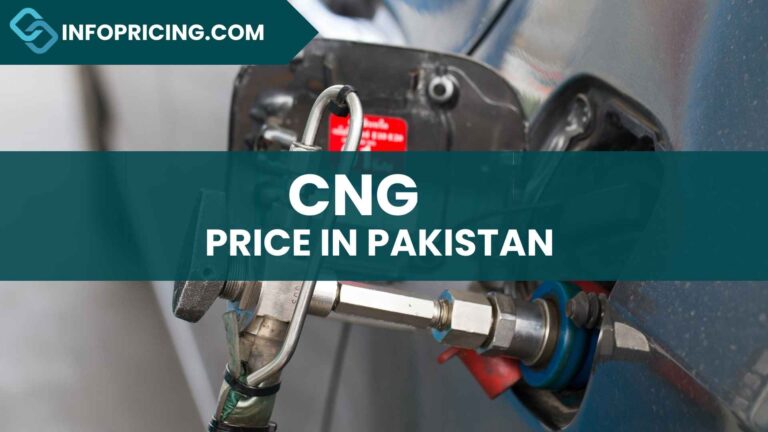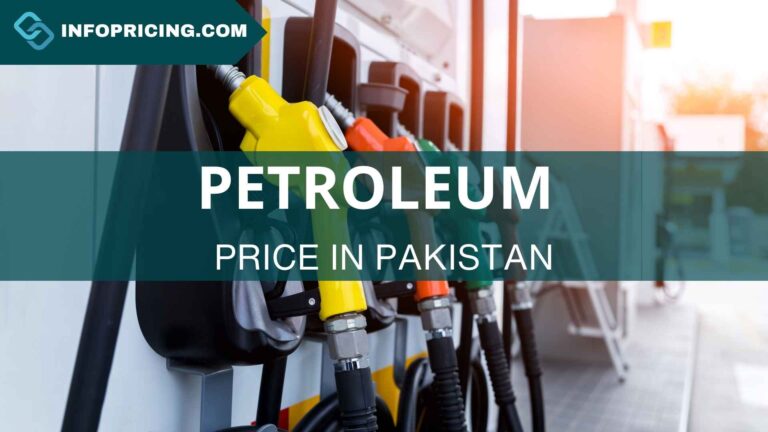LPG Price in Pakistan 2025
It’s important for everyone to know the current lpg price in pakistan. This helps with budgeting for both homes and businesses. The price of a 12 kg gas cylinder in pakistan today is key to making smart choices.
The gas cylinder price in pakistan changes often. So, it’s vital to keep up with the latest lpg rate and lpg 1kg price today. This way, you can avoid surprise costs.
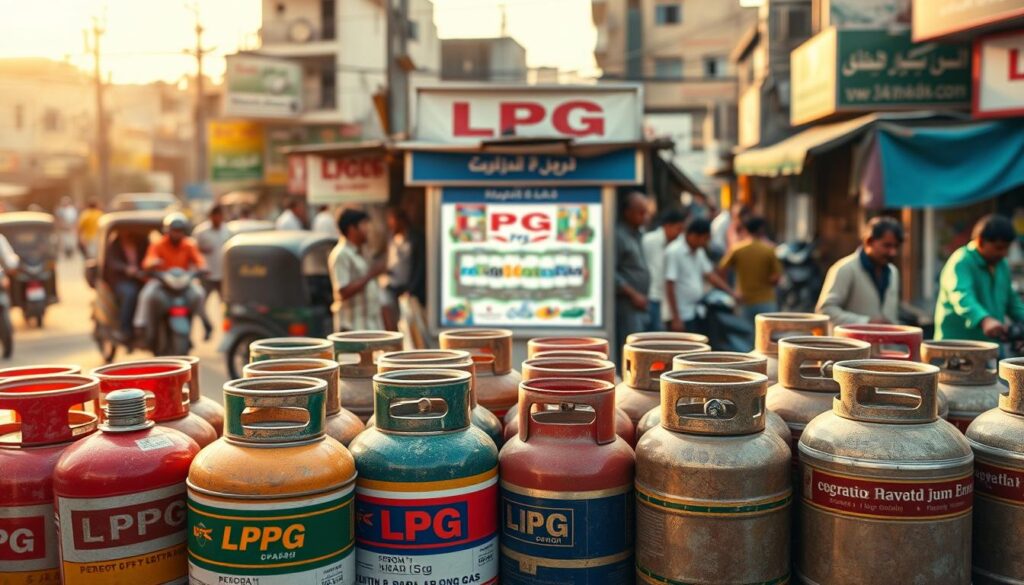
Understanding the market and the types of lpg cylinders is crucial. This knowledge helps you use your energy budget wisely. Knowing the current lpg price in pakistan lets you plan better and stay ready for price changes.
LPG Rate in Pakistan 2025
| LPG Volume | Old Price (PKR) | New Price (PKR) | Difference |
| LPG Rate Per Kg | 253.97 | 247.82 | -6.15 |
| Domestic Cylinder Rate ( 11.8 kg ) | 2996.85 | 2924.31 | -72.54 |
| Commercial Cylinder Rate ( 45.4 kg ) | 11530.24 | 11,251.02 | -279.22 |
The lpg rate today can change based on where you are and who you buy from. So, it’s important to stay informed about the latest lpg 1kg price today and 12 kg gas cylinder price in pakistan today.
Key Takeaways
- Stay up-to-date with the current lpg price in pakistan to manage energy costs effectively
- Know the lpg rate today to plan budget and avoid unexpected expenses
- Understand the different types of lpg cylinders available and their prices
- Keep track of the 12 kg gas cylinder price in pakistan today for informed decision-making
- Be aware of the factors that affect the lpg 1kg price today and lpg rate in pakistan
- Plan energy consumption according to the current lpg price in pakistan to stay ahead of price changes
Current LPG Price in Pakistan: Market Overview
The lpg gas price in pakistan is a big worry for many. Today, the lpg price in pakistan today per kg is about 150 PKR. The cost of an lpg gas cylinder changes based on its size and type. For example, a 12.5 kg cylinder price in pakistan is around 1800 PKR.
Many things affect the lpg gas price in Pakistan. These include global trends and government rules. The lpg price can change based on market demand and supply. To understand the current market, let’s look at the different LPG rates in Pakistan.
Domestic and Commercial LPG Rates
Domestic LPG rates are usually lower than commercial ones. The lpg gas price in pakistan for home use is about 140 PKR per kg. Commercial rates are around 160 PKR per kg.
In summary, the lpg gas price in pakistan is key to the country’s energy market. Knowing the different LPG rates helps households and businesses plan their energy use better.
Understanding Pakistan’s LPG Supply Chain
The pakistan lpg market involves many players, like oil and gas companies, distributors, and retailers. To grasp the lpg rates pakistan, we must look at the supply chain. This includes production and distribution. The lpg cost in pakistan is shaped by global trends, transport costs, and rules from the government.
The latest lpg prices pakistan change based on the supply chain’s efficiency and the roles of stakeholders. The pakistan lpg price trends show a market that goes up and down. Prices shift often because of global demand and supply changes. It’s key to know how stakeholders work together and what affects lpg rates pakistan.
Here are some key factors that impact the pakistan lpg market:
- Production and refining capacity
- Transportation and storage infrastructure
- Government regulations and policies
- Global market trends and demand
By studying these factors and the pakistan lpg market, people and businesses can make smart choices about lpg cost in pakistan. They can also keep up with the latest lpg prices pakistan. The pakistan lpg price trends will keep changing. It’s vital to stay informed to handle this complex market well.
City-wise LPG Price Comparison
LPG prices in Pakistan vary by city. Costs like transportation, taxes, and demand play a role. Let’s explore the current prices in major cities.
In Lahore and Karachi, prices differ. Lahore’s LPG is PKR 1,500 per cylinder. Karachi’s is PKR 1,600.
Regional Price Variations
In Islamabad and Rawalpindi, prices are PKR 1,700 per cylinder. Peshawar and Quetta have prices from PKR 1,800 to PKR 2,000.
Here’s a quick look at LPG prices in different cities:
- Lahore: PKR 1,500 per cylinder
- Karachi: PKR 1,600 per cylinder
- Islamabad and Rawalpindi: PKR 1,700 per cylinder
- Peshawar: PKR 1,800 per cylinder
- Quetta: PKR 2,000 per cylinder
Factors Influencing LPG Prices in Pakistani Market
The lpg price per kg in Pakistan is shaped by many things. These include global market trends, government policies, and how much people use LPG. Knowing these factors helps households and businesses plan their energy use better. The pakistan lpg price also changes based on how much it costs to transport LPG, which can differ by location.
Some important things that affect current lpg prices are:
- Global market trends: Changes in global demand and supply can change lpg cylinder price today.
- Government policies: New rules and taxes from the government can impact lpg cost per kg.
- Seasonal demand: More people using LPG in winter can raise lpg price per kg.
Also, the pakistan lpg price can be influenced by local factors. These include the cost of transporting LPG and how easy it is to get. It’s important to keep up with the latest current lpg prices to make smart choices about energy. By understanding what affects lpg cylinder price today, people can make choices that save money.
Different LPG Cylinder Categories and Their Prices
The prices of LPG cylinders in Pakistan change based on the type and use. Several factors like production costs, transportation, and government rules affect these prices. It’s important to know about the different cylinder types to understand price trends.
Domestic cylinders are the most used in Pakistan. They are for home use and are smaller. Their prices are lower than commercial and industrial cylinders. Commercial cylinders are for places like restaurants, and industrial ones are for big industrial uses.
Domestic Cylinder Rates
Domestic cylinder rates are the most affordable in Pakistan. Prices for these cylinders range from PKR 1,500 to 2,000, depending on where you are and who you buy from. It’s good to watch price trends to find the best deals.
Commercial Cylinder Costs
Commercial cylinder costs are higher because they are bigger and used more. Prices for these cylinders are around PKR 5,000 to 7,000. These prices can change based on the market and government rules.
Industrial LPG Pricing
Industrial LPG pricing is the highest because a lot of gas is needed. Prices for industrial cylinders are between PKR 10,000 and 15,000. It’s important to keep up with price trends to get the best deals from suppliers.
Government Regulations and Price Control Mechanisms
The government of Pakistan has a big role in the LPG market. Its policies affect the latest lpg price in pakistan a lot. The goal is to keep the market stable and competitive.
They use lpg prices update to show changes in the global market. This helps keep prices fair for everyone.
The lpg price chart is key for the government. It helps them understand market trends. This way, they can make smart decisions about the market.
The lpg price forecast is also important. It helps the government get ready for future changes in the market.
Some important government rules include:
- Price ceilings and floors to prevent big price swings
- Taxes to affect how much LPG is bought and sold
- Rules on importing and exporting LPG to control its flow
These rules help keep the LPG market stable and fair in Pakistan. They protect both consumers and producers. Knowing these rules helps people and businesses make better choices about LPG.
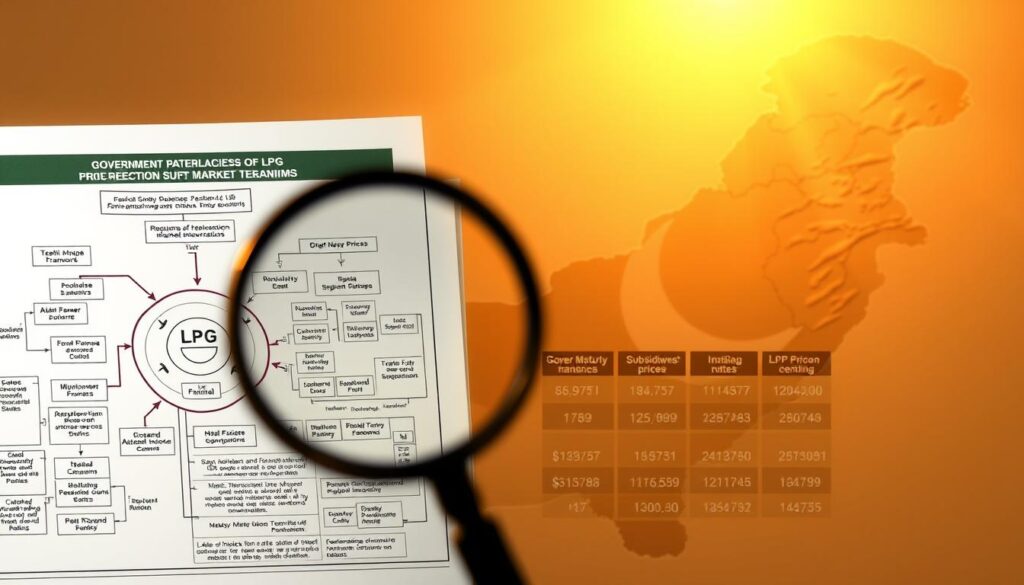
Seasonal LPG Price Fluctuations
It’s important to know how LPG prices change with the seasons in Pakistan. The lpg price trends are shaped by weather, demand, and supply issues. When it’s cold, more people use LPG, making prices go up. But in the summer, prices drop because fewer people use it.
Keeping up with the lpg price update pakistan helps you plan your energy use. The pakistan lpg pricing changes based on global markets, government rules, and local supply and demand. To know the latest lpg price trends, check the monthly updates.
Here are some key factors that influence the seasonal lpg price trends in Pakistan:
- Weather conditions: Extreme weather, like very cold winters or hot summers, can change LPG demand.
- Demand and supply: The balance between how much LPG is used and how much is available affects prices.
- Government policies: Changes in taxes or subsidies can also impact pakistan lpg pricing.
Understanding seasonal LPG price changes helps you plan your energy use better. Stay updated on lpg price trends and pakistan lpg rates to manage your energy budget well.
Tips for Finding the Best LPG Rates
When looking for the best LPG rates in Pakistan, consider a few key things. Look at current LPG prices Pakistan, the quality, and how good the customer service is. To find the cheapest options, compare lpg rates today from various suppliers. Also, check for any discounts or promotions that can lower your lpg cylinder price.
In the lpg market pakistan, prices can change a lot. They depend on who you buy from, where you are, and the time of year. To get the best lpg prices pakistan, it’s important to do your research. Use online tools or visit local suppliers to get quotes and compare prices.
Here are some tips to help you find the best LPG rates:
- Research and compare prices from different suppliers
- Check for discounts or promotions that can help reduce your lpg cylinder price
- Consider the quality of the LPG and the supplier’s customer service
- Look for suppliers that offer flexible payment options and convenient delivery schedules
By following these tips, you can find the best LPG rates in Pakistan and save money on your lpg cylinder price. Always choose a supplier that offers quality and good customer service. If you have any questions or concerns about their lpg rates today, don’t hesitate to contact them.
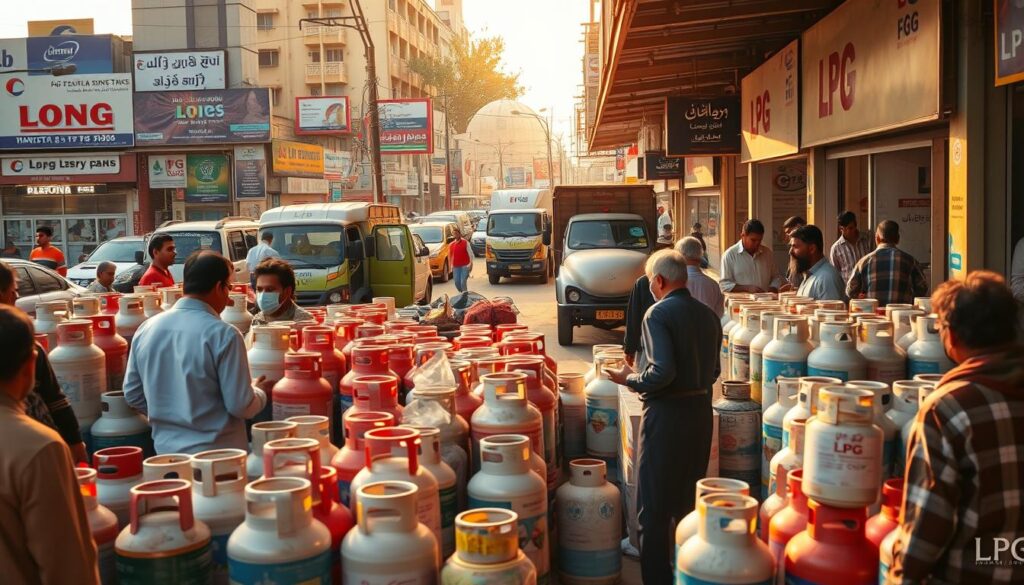
Future Outlook of Pakistan’s LPG Market
The LPG market in Pakistan is set for big changes. This is due to government policies, global trends, and new technologies. As LPG demand grows, the lpg price update will be key. The current lpg price trend shows prices might stay the same, but could go up with global demand.
The pakistan lpg price will be influenced by the lpg price per kg. This price is likely to rise because of higher production costs. Yet, the government’s push for LPG as a clean fuel will help the market grow. Key trends for Pakistan’s LPG market include:
- More people wanting LPG because of population growth and city living
- Government efforts to make LPG a preferred fuel
- Higher global demand and prices for LPG
- New tech in LPG making and delivery
The outlook for Pakistan’s LPG market is bright, with chances for growth. As the market changes, keeping up with the latest lpg price update and trends is crucial. This helps make smart choices.
Conclusion
As we wrap up our look at lpg price in pakistan, lpg rate today, lpg rate, 12 kg gas cylinder price in pakistan today, gas cylinder price in pakistan, the Pakistani LPG market is always changing. We’ve learned how crucial it is to keep up with the latest prices, rules, and news. This helps you make smart choices for your home or business.
The future of Pakistan’s LPG market is full of ups and downs. The government is working hard to make things better. They want to improve how LPG is delivered, set fair prices, and encourage cleaner energy. But, the world’s markets, delivery issues, and policy changes will still affect LPG prices.
Looking forward, the main thing is to stay connected to the LPG world. Use technology to get the latest prices and find new ways to make LPG more affordable and available. By doing this, everyone can thrive in the changing LPG market and find new chances for growth and sustainability.
FAQ
What is the current LPG price in Pakistan?
LPG prices in Pakistan change based on where you are, the type of cylinder, and market conditions. Domestic and commercial LPG rates, along with regional prices, all play a part in the cost.
How does the LPG supply chain work in Pakistan?
In Pakistan, LPG is produced, distributed, and marketed by several groups. These include oil and gas companies, distributors, and retailers. Knowing how this chain works helps us understand what affects LPG prices.
How do LPG prices differ across major cities in Pakistan?
LPG prices vary across Pakistan’s cities. This is due to different costs for transport, taxes, and demand in each area. Cities like Lahore, Karachi, Islamabad, and Rawalpindi have prices that are closely watched.
What are the main factors that influence LPG prices in the Pakistani market?
Several things affect LPG prices in Pakistan. These include global trends, government policies, seasonal demand, and transport costs. Knowing these factors helps predict and manage LPG prices better.
What are the different categories of LPG cylinders and their respective prices?
Pakistan offers various LPG cylinder types, like domestic, commercial, and industrial. Prices differ based on size, brand, and market conditions for each type.
How do government regulations and price control mechanisms affect LPG prices in Pakistan?
The Pakistani government plays a big role in the LPG market. It regulates and controls prices. Understanding these regulations is key for both consumers and businesses.
How do seasonal changes affect LPG prices in Pakistan?
LPG prices in Pakistan change with the seasons. Prices tend to shift with winter and summer demands. Keeping an eye on these trends helps with budgeting.
How can I find the best LPG rates in Pakistan?
To find the best LPG rates, look at price, quality, and service. Compare prices from different suppliers and stay updated on market trends. This way, you can find reliable and affordable LPG options.
What is the future outlook for the LPG market in Pakistan?
The LPG market in Pakistan’s future will be influenced by price predictions, market growth, and policy changes. Understanding these trends helps in planning and making informed decisions.

